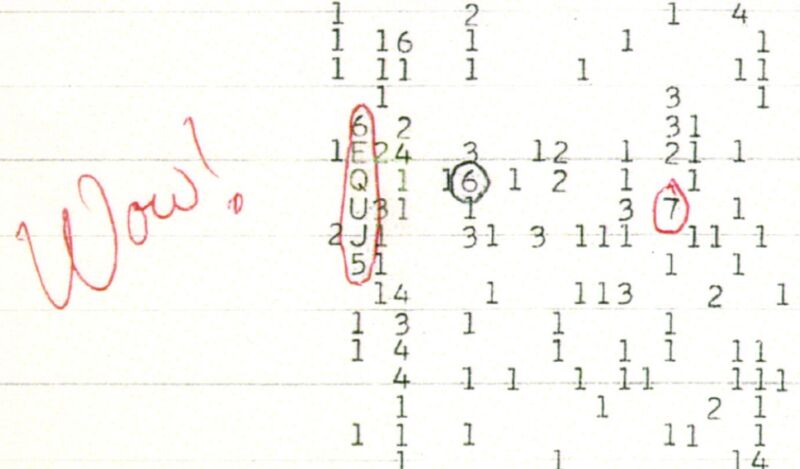Enlarge / The Wow! signal, represented as “6EQUJ5,” was discovered in 1977 by astronomer Jerry Ehman. (credit: Public domain)
An unusually bright burst of radio waves—dubbed the Wow! signal—discovered in the 1970s has baffled astronomers ever since, given the tantalizing possibility that it just might be from an alien civilization trying to communicate with us. A team of astronomers think they might have a better explanation, according to a preprint posted to the physics arXiv: clouds of atomic hydrogen that essentially act like a naturally occurring galactic maser, emitting a beam of intense microwave radiation when zapped by a flare from a passing magnetar.
As previously reported, the Wow! signal was first detected on August 18, 1977, by The Ohio State University Radio Observatory, known as “Big Ear.” Astronomy professor Jerry Ehman was analyzing Big Ear data in the form of printouts that, to the untrained eye, looked like someone had simply smashed the number row of a typewriter with a preference for lower digits. Numbers and letters in the Big Ear data indicated, essentially, the intensity of the electromagnetic signal picked up by the telescope over time, starting at 1 and moving up to letters in the double-digits (A was 10, B was 11, and so on). Most of the page was covered in 1s and 2s, with a stray 6 or 7 sprinkled in.
But that day, Ehman found an anomaly: 6EQUJ5 (sometimes misinterpreted as a message encoded in the radio signal). This signal had started out at an intensity of 6—already an outlier on the page—climbed to E, then Q, peaked at U—the highest power signal Big Ear had ever seen—then decreased again. Ehman circled the sequence in red pen and wrote “Wow!” next to it. The signal appeared to be coming from the direction of the Sagittarius constellation, and the entire signal lasted for about 72 seconds. Alas, SETI researchers have never been able to detect the so-called “Wow! Signal” again, despite many tries with radio telescopes around the world.
Read 6 remaining paragraphs | Comments




